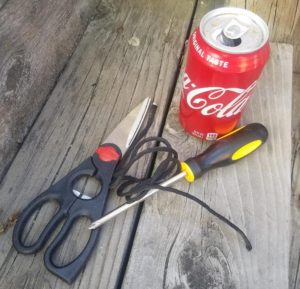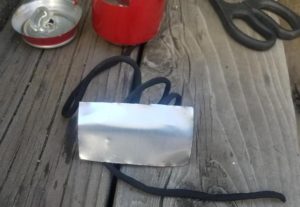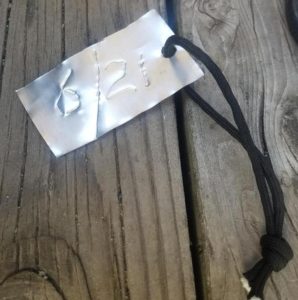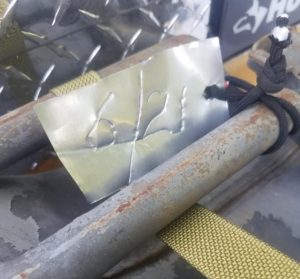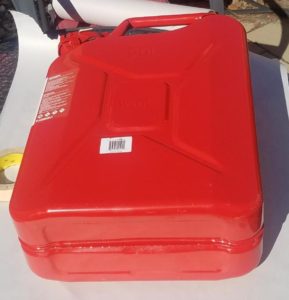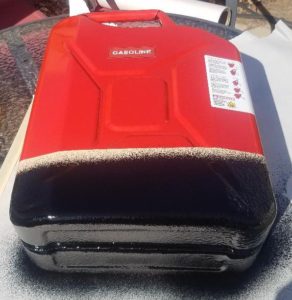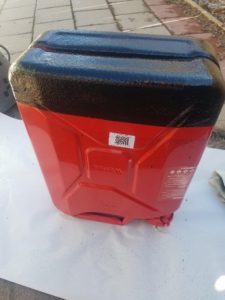A few posts back I mentioned that I had bought a new bunch of Scepter water cans.
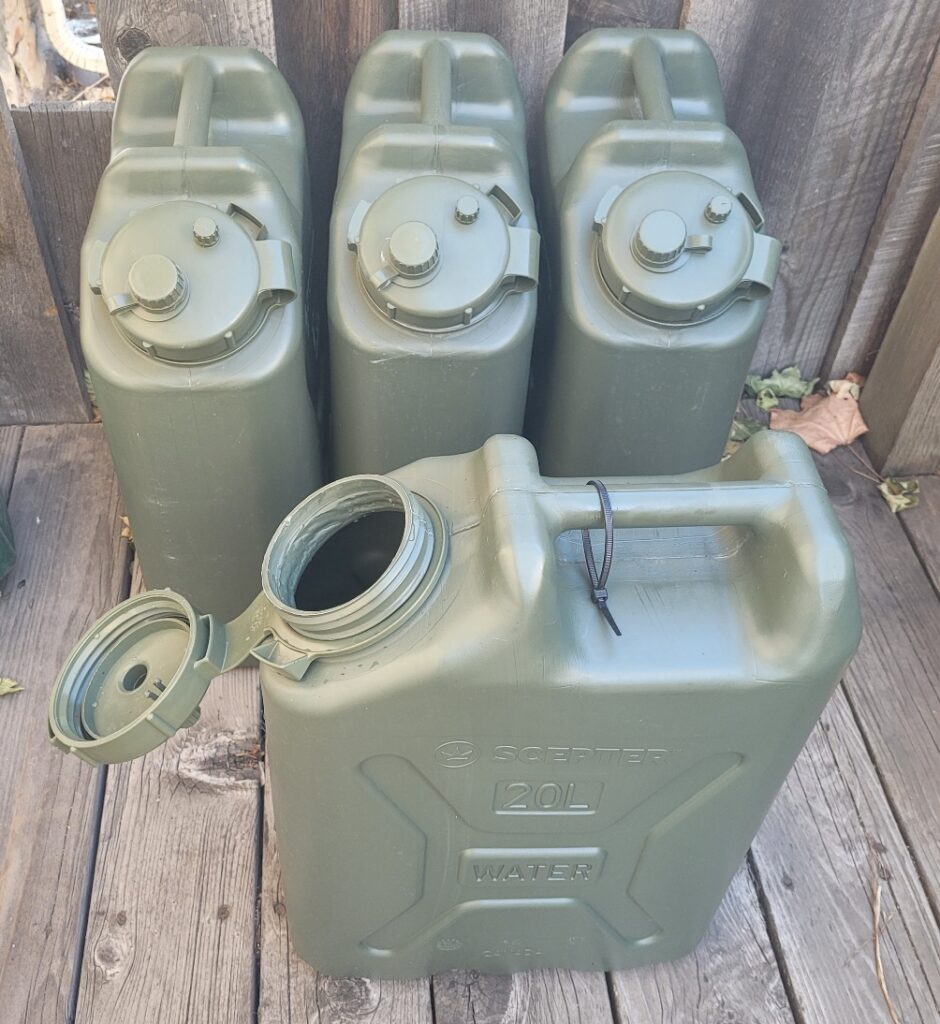 Any new plastic container is going to have ‘that plastic smell’. Also, you don’t know where that container has been or what its been exposed to in its time at the warehouse. So, the smart survivalist will clean these things out if for no other reason than to at least get rid of that unappealing strong plastic smell.
Any new plastic container is going to have ‘that plastic smell’. Also, you don’t know where that container has been or what its been exposed to in its time at the warehouse. So, the smart survivalist will clean these things out if for no other reason than to at least get rid of that unappealing strong plastic smell.
Ten bucks up at CostCo gets you about 14# of baking soda. You don’t need 14# of baking soda to wash out a water jug, but more is better, right? I err on the side of overkill, so I fill a gallon pitcher with hot water, dump in about a cup of baking soda, stir well and dump it into the water jug. Seal it up loosely so water can escape a bit and get the threads of the cap. Shake vigorously, shake some more, and then finally shake it vigorously. I give it about 30 seconds of violent shaking so I can feel the water hitting all the sides of the jug. Don’t be gentle.
Now, if you’re just doing one jug, you can dump out the mix and then rinse the thing out thoroughly with cold water from a hose. But, since I’m doing more than one, I’ll dump the mix into the next jug and repeat the process. I’ll do this for two or three jugs and then use some fresh baking soda/water mix.
Keep in mind, when you dump the water/soda mix out of the jug it will leave traces of baking soda on the inside that will eventually dry to a powdery film. This is why the rinse with clear cold water afterwards.
By this method I either totally eliminate the plastic smell, or reduce it to virtually nothing. And, of course, I’ve now cleaned out the inside of the jug. If you’re a suspenders-and-a-belt guy you may want to disinfect or sterilize the jug afterwards. Thats pretty much the same process but using water/bleach instead of water/baking soda.
And, finally, when it’s time to fill these things you can add all sortsa ‘water preservers’ or bleach to promote storage life. Its my understanding that municipal water (“city water”) is fine to store right out of the tap since it has already been treated by the municipal water provider.
I should also point out that I do this for any large plastic container that I am storing something edible in. My buckets for rice, wheat, etc., also get this treatment. In that case it is imperative that you make sure the bucket is completely bone dry before you fill it with your food product. After cleaning I usually let the bucket/container sit in a dry place indoors for a few days to completely dry out.
Can I get away with not doing any of that and just fill the things up without going through that effort? Absolutely. But this is stuff you’re putting away for a rather dire circumstance. When that dire circumstance occurs (or is occurring) aren’t you going to want every confidence and advantage possible? Of course you will…so spend the ten minutes and do the work. Future you will thank you.



